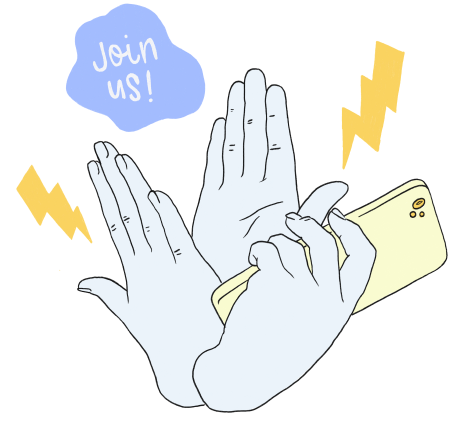
Healthcare, being a complex area of study, encompasses a lot of terms and conditions that might be challenging to comprehend. A better understanding of these medical terms can provide a more transparent insight into our health and daily lives. One such fundamental term requiring focus is the “cyst.” Despite its prevalence, the subject remains unfamiliar to most people.
We delve deeper into the world of cysts, offering a comprehensive guide on what they are, their types, causes, symptoms, diagnoses, treatments, and prevention approaches. We highlight its importance to facilitate early detection, better management, and increased public awareness regarding cysts.
What Is a Cyst? An In-Depth Explanation
In the simplest terms, a cyst can be defined as a closed sac-like pocket of tissue that contains fluid, air, or other substances. They can form anywhere in the body, vary in size, and are usually non-cancerous (benign).
However, many confuse cysts with other types of body growth. While tumors, abscesses, and even pimples share similar characteristics with cysts such as abnormal growth containing fluid or semi-solid substance, a distinguishing feature is that a cyst is encapsulated within a distinct membrane separate from the surrounding tissue, unlike other growths.
Understanding the Various Kinds of Cysts
Cysts can be broadly categorized into various types based on their location, cause, and content. Some of the common forms include ovarian cysts, breast cysts, sebaceous cysts (skin or scalp), kidney cysts, and ganglion cysts (hand or wrist). These are often harmless and can sometimes resolve on their own.
But lesser-known types like dermoid cysts (a type of teratoma that may contain a range of cell types including hair, teeth, or bone) or pilonidal cysts (a painful cyst that develops near the tailbone) should not be overlooked. Although rare, these cysts may sometimes become problematic if left unchecked.
Exploring the Causes of Cyst Formation
The causes of cyst development vary according to their type. Hormonal imbalances can cause ovarian cysts, while blocked hair follicles can lead to sebaceous cysts. Some cysts may also be congenital, where individuals are born with them.
The risk factors for cyst formation include being female, due to the higher incidence of ovarian and breast cysts, and having a history of prior cysts. Individuals with certain genetic disorders like polycystic ovarian syndrome (PCOS) are also more susceptible to cyst formation.
Identifying Cysts: Common Symptoms to Look out For
Most cysts are benign and don’t cause noticeable symptoms. However, if the cyst is large or causes secondary effects like inflammation or hormone production, symptoms including pain, skin redness or swelling may occur. Certain cysts may also lead to visible lumps or changes in organ function.
As for cyst detection, doctors may palpate manually for lumps or use imaging techniques like ultrasounds, CT scans, or MRI. In some cases, a biopsy might be conducted to rule out malignancy.
The Medical Route: How are Cysts Treated?
The treatment approach for cysts depends on their type, size, location, and if they are causing any symptoms. Observation is often sufficient for small, asymptomatic cysts. However, interventional procedures like aspiration or surgical removal may be necessary for larger, symptomatic, or potentially malignant cysts.
For prevention, maintain a healthy lifestyle and regularly examine your own body for lumps or changes in organ function. Regular check-ups and screenings are essential for early detection and management.
Get to know us better
If you are reading this, you are in the right place – we do not care who you are and what you do, press the button and follow discussions live

Cysts: A Recap of What We’ve Learned
Cysts are a common medical condition that can occur in various parts of the body. Though mostly benign, proper understanding, early detection, and appropriate management play a crucial role in minimizing complications and enhancing health outcomes.
Emphasizing the importance of regular check-ups provides a higher chance for early cyst detection, a better therapeutic approach, and overall superior disease management.
FAQs:
- Are all cysts cancerous?
No, most cysts are benign and not cancerous. However, some cysts may have the potential to become cancerous if left unchecked. Therefore, any new or changing lumps should be evaluated by a doctor.
- Can cysts go away on their own?
Yes, certain types of cysts can resolve on their own over time. However, some may require medical intervention, especially if they are large, causing symptoms, or potentially cancerous.
- How can I tell if I have a cyst?
In many cases, you would not be aware of a cyst unless it’s large enough to cause a noticeable lump, pain, or discomfort. Imaging tests performed for other reasons can sometimes accidentally discover cysts.
- What is the most common type of cyst?
There are many types of cysts, with one of the most common types being an epidermoid cyst, which forms when the top layer of skin cells gets trapped underneath the skin and starts to grow in a sac.
- Are there any home remedies to treat cysts?
Home remedies aren’t typically recommended without medical supervision. But in some instances, warm compresses can help relieve discomfort caused by some cysts. However, any new or changing cyst should be evaluated by a healthcare professional.

















Comments
Thank you. Comment sent for approval.
Something is wrong, try again later